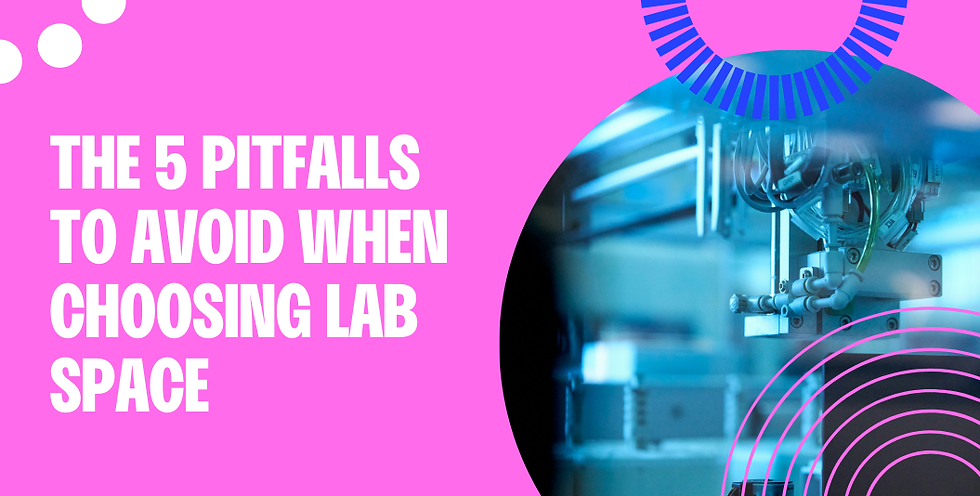9 Sept 2025
Looking for Labs? Here's 5 pitfalls to avoid

As scale-up companies transition out of incubators and into dedicated lab space, the stakes get higher. The right environment can accelerate growth, attract top talent, and unlock funding. But the wrong space? It can drain resources, limit flexibility and slow progress.
At Sciopolis, we’ve seen brilliant innovators trip up, not due to a lack of vision, but because lab space presents a complex and unfamiliar landscape. The opportunity cost of spending months navigating costly configuration missteps is often hidden, but very real.
To help founders avoid these setbacks, we’ve identified five common pitfalls to watch out for:

It’s tempting to design the “perfect” lab: state-of-the-art equipment, high-spec finishes, and every possible contingency covered. But overdesigning can lead to unnecessary costs and underutilised space.
Why it happens: we often plan for our ideal future state, not our current needs. We may also assume investors expect a polished, high-tech environment.
What to do instead: Focus on what’s essential for your current stage. Modular layouts, standard lab designs, shared facilities, and scalable infrastructure can offer flexibility without locking in high upfront costs. Think MVP—Minimum Viable Premises

Many innovators are navigating commercial real estate for the first time. Without market knowledge or negotiation experience, they may end up with inflated rents or unfavourable terms.
Why it happens: Urgency to move, lack of benchmarking data, and unfamiliarity with lease structures can lead to poor decisions.
What to do instead: Talk to peers, advisors, or specialist consultants. Benchmark against similar companies. Alternatively, consider ready-to-occupy lab space that grows with you: letting you leapfrog construction delays/costly mistakes and focus on your science.

Full Repairing and Insuring (FRI) leases can seem like a solid commitment, but they’re often rigid and long-term. Many scale-ups outgrow their space faster than expected, leaving them stuck or facing costly exits.
Why it happens: FRI leases are standard in commercial property, and founders may not realise the implications until it’s too late.
What to do instead: Look for flexibility. Managed lab spaces, short-term licenses, or leases with break clauses can give you room to grow—or pivot—without penalty.

The headline rent is just the beginning. Fit-out costs, service charges, consultant fees, dilapidation liabilities, and extra square footage requirements can quickly inflate your budget.
Why it happens: These costs are often buried in the fine print or emerge late in the process. Navigating these costs often requires specialist advisors—adding both complexity and expense.
What to do instead: Ask for a full cost breakdown upfront. Work with a legal advisor who understands lab space. Alternatively, opt for an all-inclusive model. When you compare apples to apples—including hidden costs—it may be more affordable than an FRI lease, and will demand far less of your bandwidth.

Lab space isn’t just about technical specs, it’s about being in the right ecosystem. The right location can attract talent, investors, collaborators and visibility. The wrong location can make all of the key issues an awful lot harder.
Why it matters: Proximity to universities, hospitals, innovation clusters and transport links can dramatically impact recruitment, partnerships, and funding.
What to do instead: Choose a location that aligns with your mission and community: being part of a vibrant innovation district can open doors that no amount of spec can.
Choosing lab space is more than a real estate decision, it’s a strategic investment in your company’s future.
By avoiding these five common mistakes, innovators can secure space that supports growth, attracts talent, and builds resilience.
If you're navigating this journey and want to avoid the pitfalls, Sciopolis is here to help. We’re building infrastructure designed for scale-ups—flexible, affordable, and embedded in thriving ecosystems.